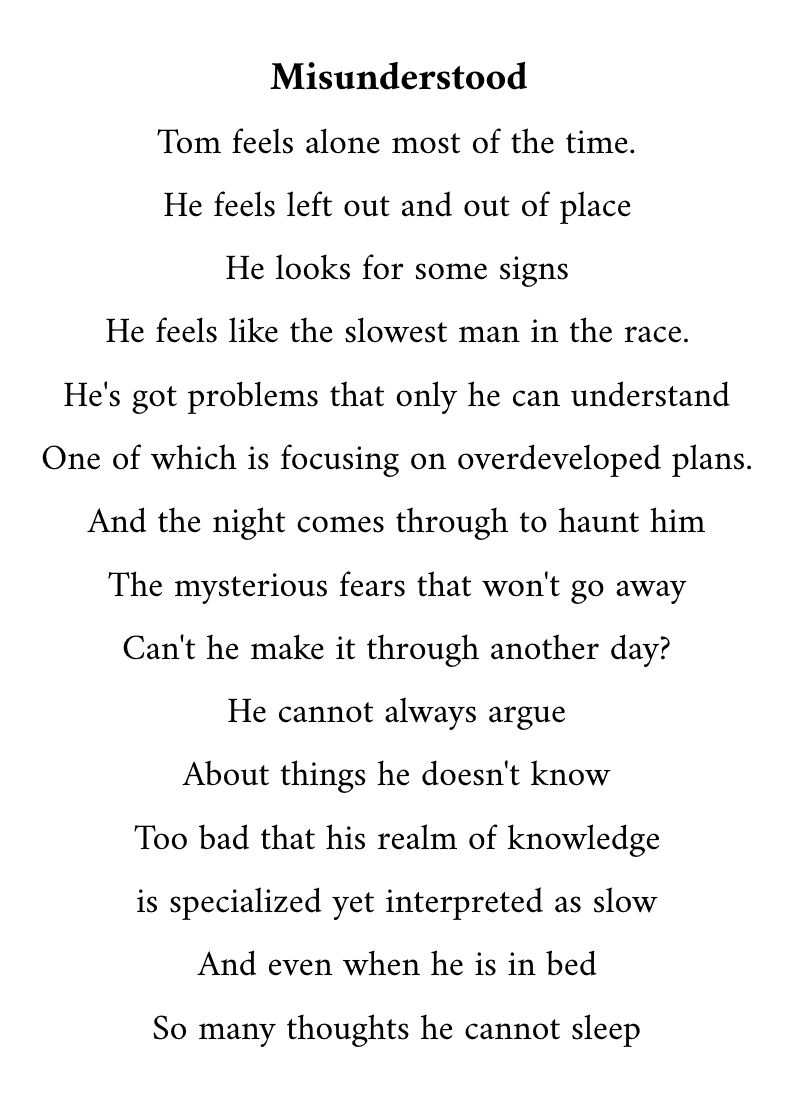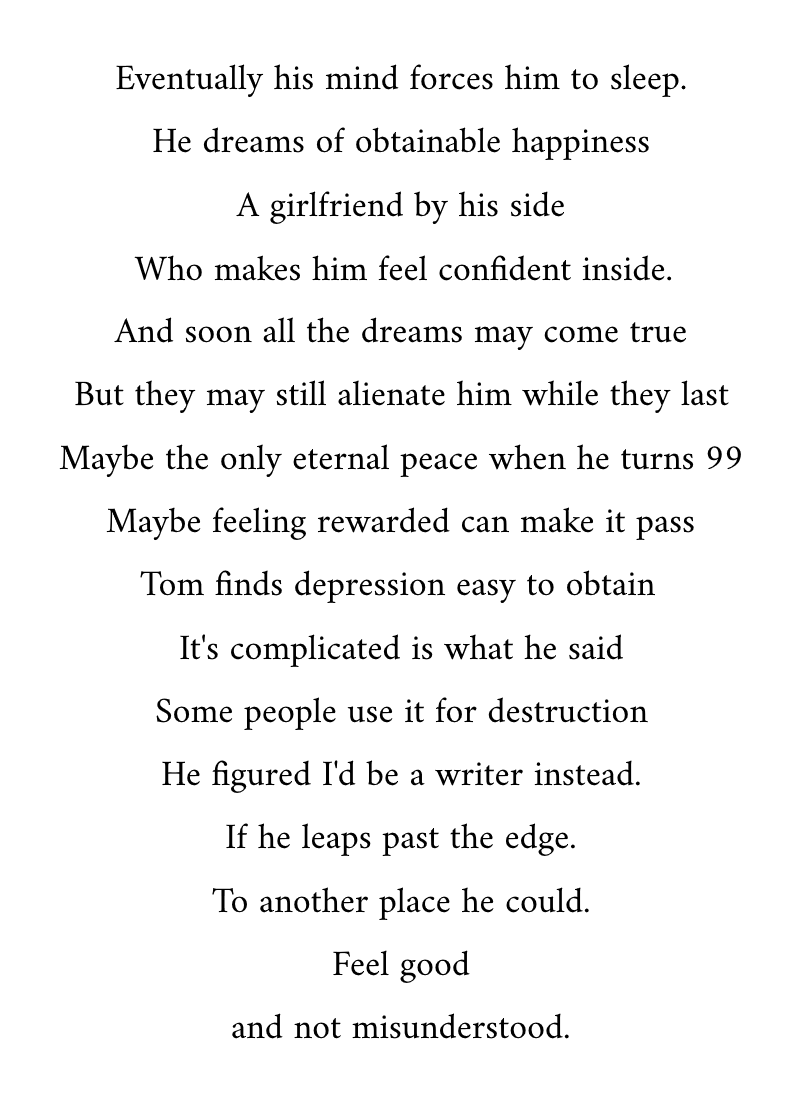Editor’s note: This story includes the mention of suicide and its impact on a community. If you or someone you know is suicidal, you can reach the national suicide hotline at 800-273-8255.
 National suicide prevention hotlines are bracing for an influx of calls when the new, shorter number – 988 – launches July 16. Proponents are hopeful it will ease access to services, decrease unnecessary interactions with the police, and save lives. But some advocates are asking whether it will be ready to serve people with autism.
National suicide prevention hotlines are bracing for an influx of calls when the new, shorter number – 988 – launches July 16. Proponents are hopeful it will ease access to services, decrease unnecessary interactions with the police, and save lives. But some advocates are asking whether it will be ready to serve people with autism.
Research shows people with autism spectrum disorder have a much greater risk of suicidal thoughts and behaviors. Despite this – and despite doctors identifying more than 2% of 8-year-olds as having autism – ongoing survey research indicates that many people with autism don’t feel served by these hotlines. Some advocates also fear that the 988 number may unintentionally increase the use of the Baker Act to detain children with autism at mental health centers.
Merrick Egber works as an assistant at Els for Autism, a nonprofit serving people with autism spectrum disorder and their families. He helped create a support group for people with autism and co-occurring conditions, like depression, which research shows is common. He knew first-hand it was needed.
“I’ve had many, many suicidal ideations in the past,” Egber said, “usually when I would feel trapped.”
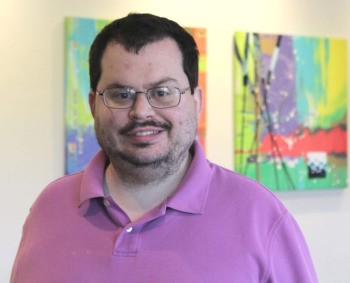
Courtesy of Merrick Egber
Merrick Egber helped create a support group for people with autism and co-occurring conditions like depression. He knew first-hand it was needed.
Egber said he has dealt with a depressive disorder since the 10th grade, in addition to being on the autism spectrum.
“You’ve got all these different things going on with you,” he said, “and you have these, how can I say it . . . problems expressing yourself in a way that you know other people may be able to understand.”
Jack Scott is the director of the Center for Autism and Related Disabilities at Florida Atlantic University, and spoke to WUFT in his role as a professor of special education. Scott said the Florida centers just completed a survey in conjunction with the Autism Society of America, of which he serves on the board.
The more than 300 responses from around the country are still under review, but Scott said a first glance showed that many people with autism don’t consider calling crisis hotlines when they’re in distress, and less than half said they’d recommend it to a friend. The majority gave grades of C or below to their past hotline experiences.
Scott said many respondents didn’t feel heard or taken seriously. Several factors may be contributing to this: the difficulties people with autism have expressing emotions in a way neurotypical people recognize; the longer time they may need to process in a conversation; the ineffectiveness of questions based on emotional language.
Asking a person with autism to describe how they feel might not be helpful, Scott said. Non-emotional language might be better suited: Can you describe your activities today? Why are you calling? Did something bad happen in your life?
What neurotypical people might find as unusual phrasing, inappropriate reactions or overly long processing time, Scott said, may contribute to the hotline workers thinking the call is a prank.
This can add layers of frustration to what can already be an overwhelming interaction for someone with autism.
Egber said when he was younger and would get into an argument with his parents, he found it hard to speak to them directly.
“I would just sit in a bathroom nearby,” he said, “and I would talk to myself about all my defenses . . . and the reason why I feel this and feel that in hopes that they would hear me, because direct confrontation was not exactly a strong suit for me.”
It would help if the worker was immediately made aware that the caller has autism, Scott said, but many people with autism don’t self-disclose and try to mask autistic traits on these calls, a survival strategy in a world designed for neurotypical people.
Below, listen to a version of this story that aired on WUFT-FM. (Katie Hyson/WUFT News)
Some advocates are also concerned that 988 could incidentally increase the Baker Acting of children with autism and developmental disabilities. Stacey Hoaglund is president of the Autism Society of Florida and mother to a son with autism.
“It might be better than what we had,” Hoaglund said. “But it might open up Pandora’s Box. And we might see an uptick in children with autism being Baker Acted as a result.”
Children are not supposed to be Baker Acted for behaviors related to autism, but it happens. Several incidents have made the news, and advocates say they regularly receive reports of it, but concrete numbers are unavailable.
The Florida Department of Children and Families tracks the number of children involuntarily examined under the Baker Act every year (37,882 at last count ) and the racial demographics of those children – Black children are overly represented – but it does not track how many of those children have autism or a developmental disability.
The Southern Poverty Law Center in 2021 released a report on the Baker Acting of children. Sam Boyd, the senior staff attorney, said tracking those numbers for children with autism or disabilities could help lower them by holding local systems accountable.
“The fear that we have is that this sounds better,” Hoaglund said. “‘We’re not calling 911, we’re calling 988.’ And the end result could actually be the same or similar to it – removing the child from campus with people that they don’t know.”
Hoaglund pointed to the rollout of threat assessments as a precedent for her concern.
Following the 2018 shooting at Marjory Stoneman Douglas High School, state legislation required the use of a threat assessment tool in schools. Hoaglund said the tool was used disproportionately on students with autism and developmental disabilities.
Albuquerque Public Schools in New Mexico reported data on its use of a similar tool; special education students and African American students were overrepresented for years.
Hoaglund said that issue lessened over time and with awareness, but “I would be highly impressed if the same thing doesn’t happen again” with 988.
Scott said more than 88% of survey respondents said they’d be much more likely to call the hotlines if they knew the workers had additional training in autism.
Part of the problem, Hoaglund said, is that suicide hotline workers are trained in mental health, not necessarily autistic behaviors.
Training could be pivotal. Scott said in their survey, more than 88% of respondents said they’d be much more likely to call the hotlines if they knew the workers had additional training in autism.
The director of the Alachua County Crisis Center, Ali Martinez, said they train their volunteers to be aware of signs of autism they may hear on a call and to meet people “where they are with the language they are using.”
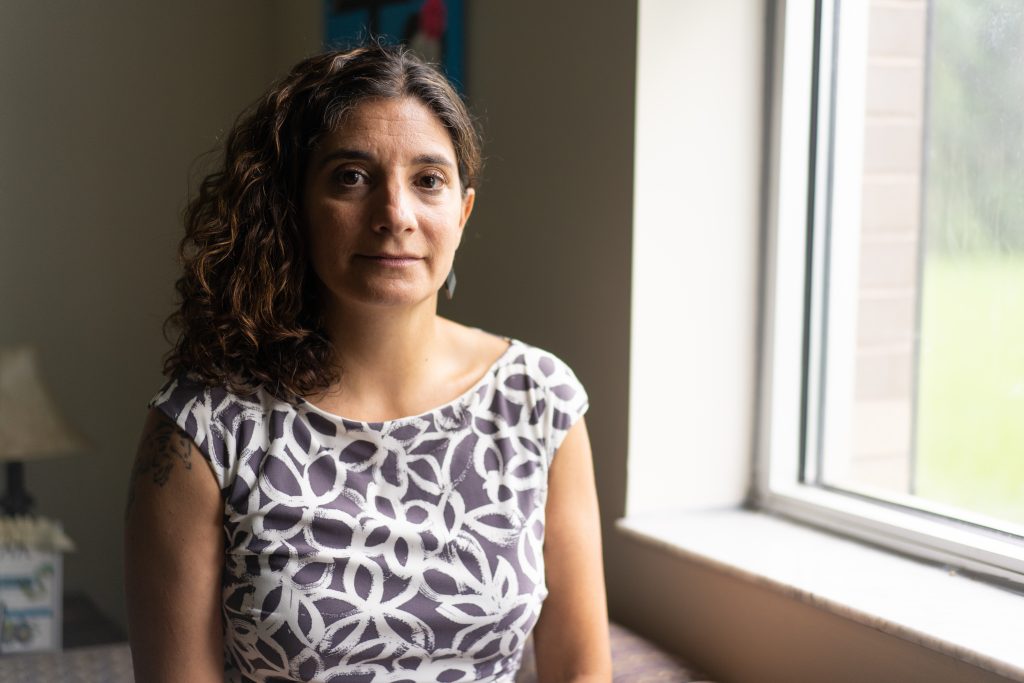
Katie Hyson/WUFT News
Director of the Alachua County Crisis Center, Ali Martinez, stands in a victim services room of the county health building. The center is currently undergoing renovations to prepare for the rollout of 988, which they anticipate will greatly increase the demand for their services.
“We’re working very hard to educate ourselves,” Martinez said. “With all of our call volume increase, we hope that anybody and everybody is going to be reaching out, so we want to be more prepared.”
She said they don’t currently consult with people from the autism community to assist in developing that training locally, but “we would love partners.”
“Give us feedback,” Martinez said.
A National Suicide Prevention Lifeline spokesperson said while they don’t have a full autism-specific training, they do provide ongoing educational resources for crisis counselors to better support neurodivergent callers, including webinars and a guidance document created by the autism and suicide committee of the American Association of Suicidology.
Though the national line has standards all of its centers have to meet, how individual centers implement that training is determined locally, which could make unifying autism-specific training difficult.
Annual crisis hotline contacts could increase by as much as 36 million in five years after the introduction of 988. Click the arrow to see the projected growth models. (Vibrant Emotional Health)
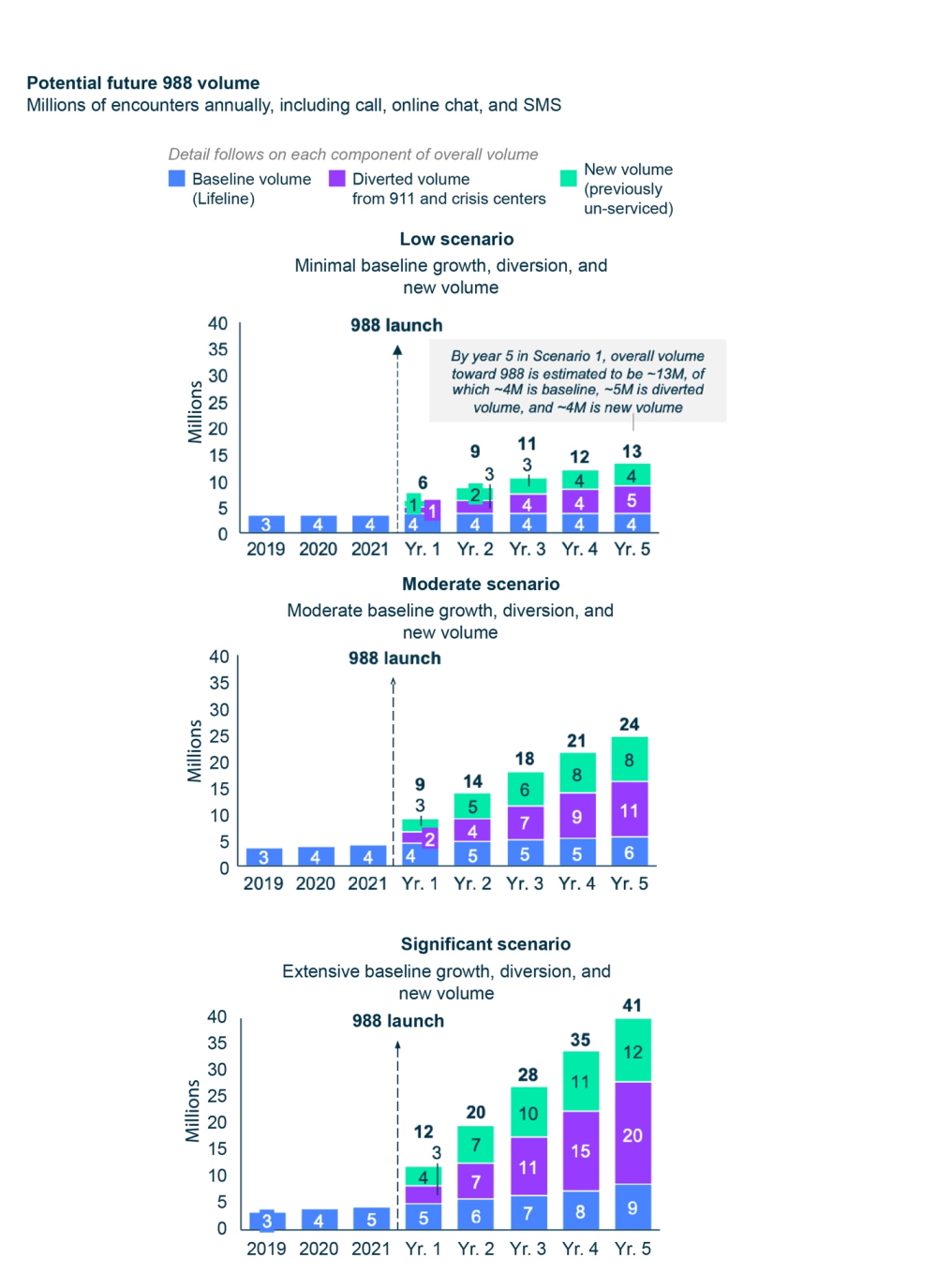
Gayle Giese, president of the Florida Mental Health Advocacy Coalition and member of Florida’s 988 planning coalition, is hopeful for the alternative 988 will offer to 911.
“It’s a huge transformative shift to take behavioral health away from the criminal justice system,” Giese said.
The Florida Mental Health Advocacy Coalition is trying to identify where service gaps are across the state, Giese said, as they prepare for calls to increase.
Both mental health services and resources for people with autism can be harder to find in rural areas of the state.
The hotline will ideally work in coordination with crisis stabilization centers and mobile response teams, but availability varies statewide. Some counties share response teams. Some teams only serve people 25 and under.
Giese said 988 is not intended as a number for school administrators to call. Under recent Florida law, schools must make a reasonable attempt to both notify the guardian and deescalate the crisis by contacting a mental health professional or mobile response team directly, before using the Baker Act.
The question for advocates like Hoaglund is whether 988, like Baker Acting and threat assessments, will be used in a way it wasn’t intended.
Egber said he thought about calling a crisis hotline in the past, but had a hard time imagining they could provide him with what he needed. He said one problem is that hotlines rely entirely on verbal communication, and suggested a chat option.
Giese said while all centers may not be ready to implement them in July, text and chat options are required for 988 and should be available over the next few years.
Both Hoaglund and Scott recommended the introduction of more behavioral staff in schools and more autism-specific training for school staff and hotline workers.
Rather than turn to hotlines, Egber found another way to express his struggle and his hope: writing lyrics.
Above: Merrick Egber recites his lyrics titled, “Misunderstood.” Read them in full below.



